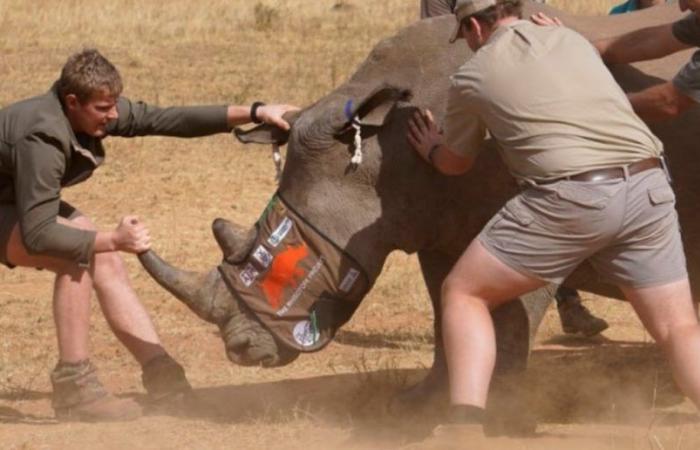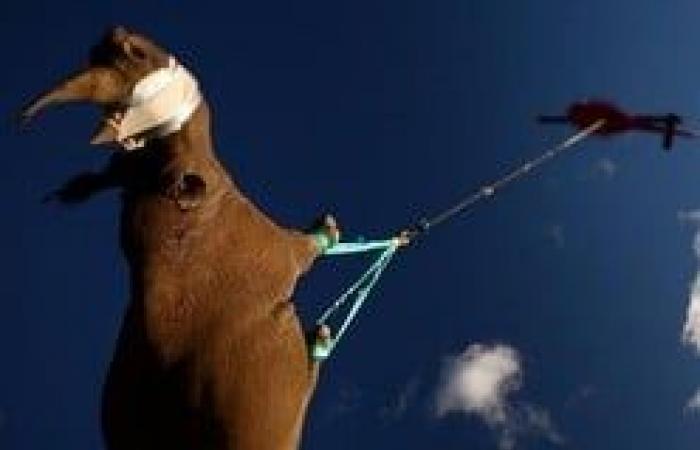Researchers in South Africa have injected radioactive material into the horns of 20 rhinos as part of a research project aimed at reducing poaching.
The idea is that radiation detectors already installed at national borders will detect the antlers and help authorities arrest poachers and traffickers.
The investigation, which involved veterinarians and nuclear experts, begins by tranquilizing the animal, before drilling a hole in the horn and carefully inserting the nuclear material.
This week, researchers at the Radiation and Health Physics Unit at the University of the Witwatersrand in South Africa injected 20 live rhinos with these isotopes. They hope the process can be replicated to save other wildlife species vulnerable to poaching, such as elephants and pangolins.
Nuclear monitoring
“We are doing this because it makes it much easier to intercept these horns as they are trafficked across international borders, because there is a global network of radiation monitors that have been designed to prevent nuclear terrorism,” said Professor James Larkin, who directs the project. “And we are taking advantage of that.”
According to figures from the International Union for Conservation of Nature, an international conservation body, the global rhino population was around 500,000 at the beginning of the 20th century. It is now around 27,000 due to the continuing demand for rhino horn on the black market.
South Africa has the largest rhino population, approximately 16,000, making it a hotspot where more than 500 rhinos are killed each year.
The country saw a significant decline in rhino poaching around 2020, at the height of the Covid-19 pandemic, but numbers increased when virus restrictions were eased.
“We have to do something new and different to reduce poaching. We can already see that the numbers have started to rise”Larkin said. “During Covid, all the numbers were down, but after Covid we’re starting to see those numbers go up again.”
 See alsoExperiment to carry rhinos “by their legs” wins Ig Nobel Prize
See alsoExperiment to carry rhinos “by their legs” wins Ig Nobel Prize While the idea has received support from some in the industry, researchers have had to overcome many ethical hurdles raised by critics of their methodology.
Pelham Jones, president of the Private Rhino Owners Association, is among critics of the proposed method and doubts it can effectively deter poachers and traffickers.
South Africa has the largest rhino population, approximately 16,000, making it a hotspot where more than 500 rhinos are killed each year.
“(Poachers) have come up with other ways to get rhino horns out of the country or off the continent, not through traditional border crossings,” he said. “They avoid border crossings because they know it is the area of greatest risk for confiscation or interception.”
Professor Nithaya Chetty, dean of the Witwatersrand Faculty of Science, said the dose of radioactivity was very low and its potential negative impact on the animal had been thoroughly tested.




